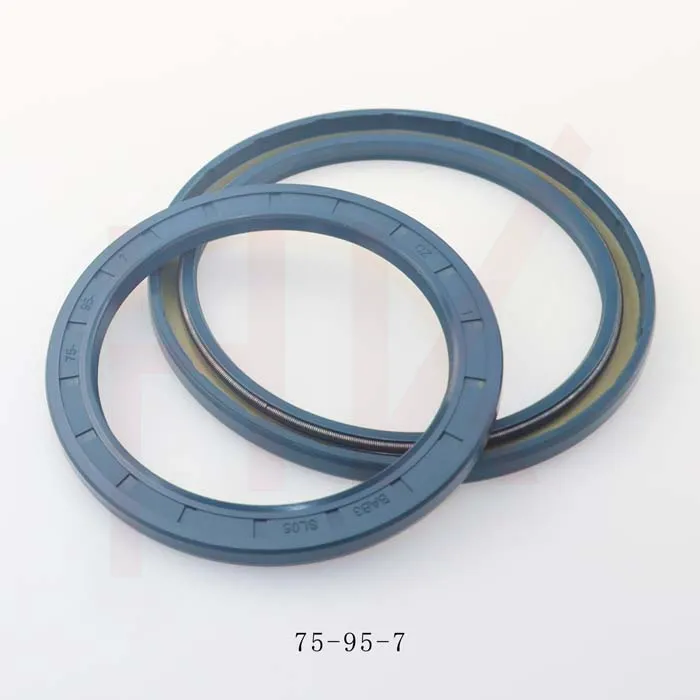دېكابىر . 11, 2024 07:39 Back to list
Hydraulic Seal Change Guide for Improved Equipment Performance and Longevity
Understanding Hydraulic Seal Replacement A Comprehensive Guide
Hydraulic systems are essential in various industries, ranging from manufacturing and construction to agriculture and automotive. These systems rely on hydraulic fluid to transmit power and achieve movement. One critical component within hydraulic systems is the hydraulic seal. Over time, these seals can wear out or become damaged, necessitating their replacement to maintain system efficiency and prevent leaks. In this article, we will explore the importance of hydraulic seal replacement, the signs that indicate a need for replacement, and the steps involved in the replacement process.
The Importance of Hydraulic Seals
Hydraulic seals serve a crucial function in hydraulic systems. They prevent the leakage of hydraulic fluid and hinder contamination from external elements. The effectiveness of these seals directly impacts the system's performance, efficiency, and safety. If seals fail, it can lead to several issues, including reduced pressure, inefficient operation, and even catastrophic system failure. Therefore, regular inspection and timely replacement of seals are essential for maintaining optimal hydraulic system performance.
Signs That Indicate Seal Replacement is Needed
1. Fluid Leaks The most apparent sign of a failing hydraulic seal is the presence of leaks. If you notice hydraulic fluid pooling around components or dripping from the machine, it is a clear indication that the seals need inspection and possibly replacement.
2. Decreased Performance If your hydraulic system is struggling to maintain pressure or is operating sluggishly, worn seals may be the culprit. A decrease in system performance often signals that seals are not functioning effectively.
3. Increased Noise Levels Unusual noises, such as whining or grinding, can indicate internal issues within the hydraulic system, including seal damage. This noise often results from improper sealing, which leads to inefficient operation.
4. Visual Damage Inspecting the seals visually can provide insights into their condition. Look for signs of wear, such as cracks, gouges, or deformation. If the seals appear damaged, they should be replaced promptly.
The Replacement Process
hydraulic seal replacement

Replacing hydraulic seals is a critical task that should be carried out carefully to ensure proper function. Here are the steps involved in the replacement process
1. Safety First Before beginning any maintenance work, it is crucial to disconnect the hydraulic system from its power source and relieve any pressure. This ensures safety during the replacement process.
2. Disassemble the Component Carefully disassemble the hydraulic component where the seal is located. Take note of the order of disassembly and the placement of various components to facilitate reassembly.
3. Remove the Old Seal Gently remove the old seal using appropriate tools. Be careful not to damage the sealing surfaces or other components during this process. Any debris left behind can cause premature failure of the new seal.
4. Clean the Surfaces Thoroughly clean the sealing surfaces to remove any dirt, debris, or remnants of the old seal. This step is crucial for ensuring a proper seal later on.
5. Install the New Seal Carefully install the new hydraulic seal, ensuring it is seated correctly. Follow the manufacturer’s specifications regarding orientation and installation techniques. Improper installation can lead to leaks and system failure.
6. Reassemble the Component Once the new seal is in place, reassemble the component in the reverse order of disassembly. Ensure all connections are tight and secure.
7. Test the System After reassembly, conduct a thorough test of the hydraulic system. Check for leaks, and monitor system performance to ensure everything is functioning correctly.
Conclusion
Hydraulic seal replacement is a vital maintenance task that cannot be overlooked. By being vigilant and proactive about seal condition, operators can ensure the longevity and efficiency of hydraulic systems. Recognizing the signs of failure and understanding the replacement process empowers users to maintain their equipment effectively, minimizing downtime and costly repairs. Regular inspections and timely replacements will ultimately lead to a safer and more efficient hydraulic operation, contributing to overall productivity in any industry.
-
TCN Oil Seal Metal Ring Reinforcement for Heavy Machinery
NewsJul.25,2025
-
Rotary Lip Seal Spring-Loaded Design for High-Speed Applications
NewsJul.25,2025
-
Hydraulic Cylinder Seals Polyurethane Material for High-Impact Jobs
NewsJul.25,2025
-
High Pressure Oil Seal Polyurethane Coating Wear Resistance
NewsJul.25,2025
-
Dust Proof Seal Double Lip Design for Construction Equipment
NewsJul.25,2025
-
Hub Seal Polyurethane Wear Resistance in Agricultural Vehicles
NewsJul.25,2025
-
The Trans-formative Journey of Wheel Hub Oil Seals
NewsJun.06,2025
Products categories
















